But looking back, always the spirit of joyousness rises before me as her emblem and characteristic: she seemed formed to live a life of happiness: her spirits were always held in check by her sensitiveness lest she should displease those she loved, & her tender love was never weary of displaying itself by fondling & all the other little acts of affection.--
We have lost the joy of the Household, and the solace of our old age:--she must have known how we loved her; oh that she could now know how deeply, how tenderly we do still & shall ever love her dear joyous face. Blessings on her.
~Charles Darwin's memorial of his daughter Anne, who died at the age of 10. April 30, 1851.
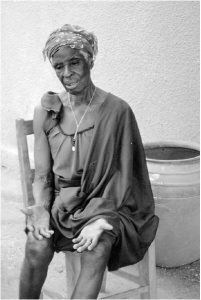
The Beng explanation, however, was that the wound was due to witchcraft. Some Beng villagers even suspected that Afwe Zi herself was a witch, due to the sad and disquieting details of her personal history. When Gottlieb returned to the village eight years later, Afwe told Gottlieb her tragic story. Over the course of her life, Afwe had fifteen children: fourteen of whom died as infants or toddlers, all from the same unknown illness. Eleven of her children had died before they could even walk. At a loss to explain this unhappy pattern, Afwe and many of the other Beng attributed the many deaths of her children to witchcraft. Gottlieb writes, "I asked Afwe who was responsible for the witchcraft. She replied: 'My mother tried to find out by doing sacrifices. They sacrificed sheep, they sacrificed sheep, they begged them. . . . Me, I've been called a witch, but never, never!! My mother offered palm wine. . . . She gave sráká sacrifices to children. It was a diviner who told my mother to offer these sacrifices. She did a lot of them! She asked the witches to release my children.'" (Gottlieb, 248)
While few parents have known the pain of seeing over a dozen of their children die so young, many parents throughout history have had to deal with the agony of losing a child. Up until the modern era, rates of infant and child mortality historically have been remarkably high. Across cultures, an average of about 27 percent of infants died before the age of one, and 47 percent failed to survive to puberty.
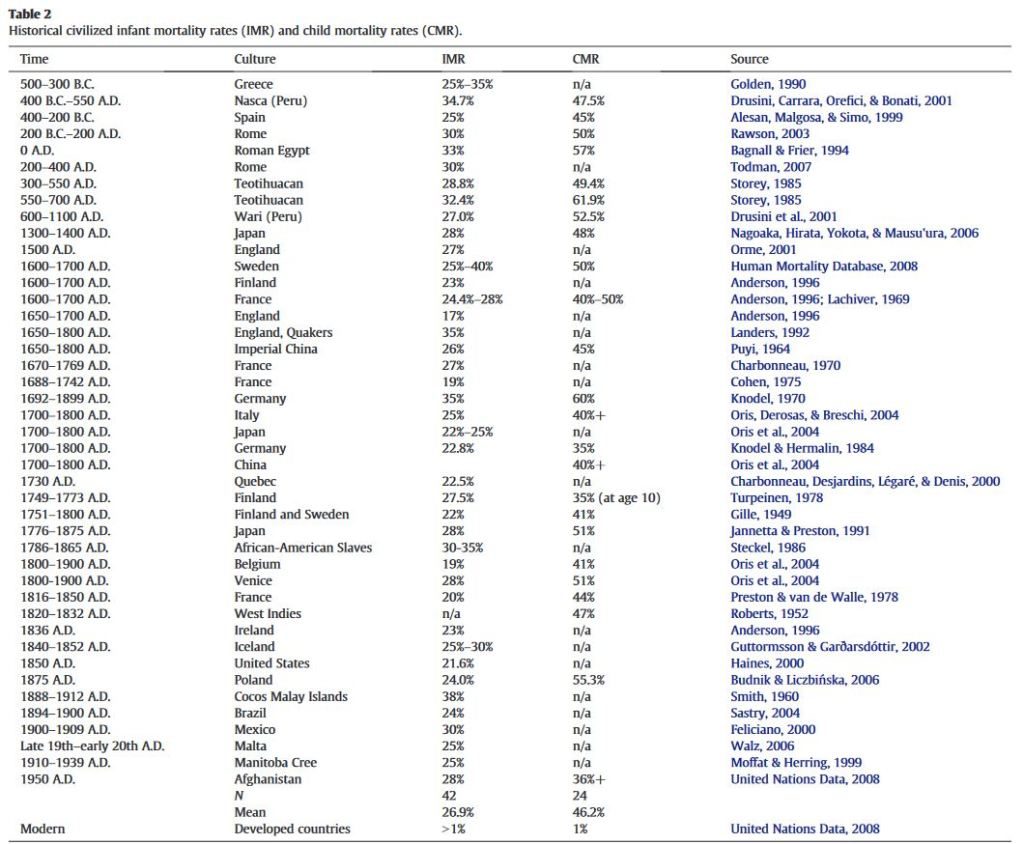
Even when their children survived, parents in many small-scale societies commonly faced agonizing dilemmas in trying to provide and care for multiple children. In his book on the Yanomami forager-horticulturalists of the Amazon, anthropologist Napoleon Chagnon describes a case of infanticide, writing that:
Bahimi was pregnant when I began my fieldwork, but she destroyed the infant when it was born - a boy in this case - explaining tearfully that she had no choice. The new baby would have competed for milk with Ariwari, her youngest child, who was still nursing. Rather than expose Ariwari to the dangers and uncertainty of an early weaning, she chose to terminate the newborn instead. (Chagnon, 29)Similarly, a man named Kuchingi of the Ache hunter-gatherers of Paraguay told anthropologists Kim Hill and Ana Magdalena Hurtado of how his young brother was killed; "The one who followed me [in birth order] was killed. It was a short birth spacing. My mother killed him because I was small. "You won't have enough milk for the older one," she was told. "You must feed the older one." Then she killed my brother, the one who was born after me." The Ache would commonly kill infants that were ill, deformed, had no father or were orphaned. Hill and Hurtado provide an extended description of one case of infanticide:
[Pirauiugi's] baby was born in camp a few days later, and all the Ache examined it carefully. Young children crowded close to watch the birth and touch the baby as their mothers rebuked them and pushed them away. Every man of the band was present except Betapagi, who had departed with his bow as soon as his new wife began to show signs of labor pain. The baby was small and had very little hair on its head. The Ache felt little affection for children born without hair. No woman volunteered to cradle the baby while the mother recovered from the birth. No man stepped forward to cut the umbilical cord. The signs were clear, and it took only Kuchingi's verbal suggestion to settle the point. "Bury the child," he said. "It is defective, it has no hair." "Besides, it has no father. Betapagi does not want it. He will leave you if you keep it." Pirajugi said nothing, and the old woman Kanegi began to dig silently with a broken bow stave. The child and placenta were placed in the hole and covered with red sandy soil. A few minutes later the Ache packed up their belongings and Grandpa Bepurangi began to break a trail through the undergrowth with his unstrung bow. Pirajugi was tired, but she had nothing to carry, so she was able to keep up without difficulty. Women cried softly as they walked through the forest. (Hill & Hurtado, 3)In many societies, patterns of infanticide can be tied to pressures related to procuring enough food. As I wrote in a previous article for Quillette:
Among the Hiwi of Venezuela, and the Ache of Paraguay, female infants and children are disproportionately victims of infanticide, neglect, and child homicide. It is in fact quite common in hunter-gatherer societies that are at war, or heavily reliant on male hunting for subsistence, for female infants to be habitually neglected or killed. In 1931, Knud Rasmussen recorded that, among the Netsilik Inuit, who were almost wholly reliant on male hunting and fishing, out of 96 births from parents he interviewed, 38 girls were killed (nearly 40 percent).In describing the patterns of infanticide among the Netsilik, Rasmussen wrote that, "instead of condemning them for cruelty we should rather regard it as a horrible consequence of the stern struggle for existence."
Social scientists Martin Daly and Margo Wilson note that the most commonly attributed reason for infanticide across small-scale societies is that the child was deformed or ill. Other common reasons are adulterous conception, the mother being unwed, and the appearance of twins. In a number of societies, twins were considered to be an ill omen. Missionary Wilfrid Barbrooke Grubb said of the Lengua of Paraguay that, "Twins they consider unlucky. Generally, if not invariably, both are put to death." Such beliefs may be tied to the difficulties of supporting two children at once. Grubb wrote that, "many of their superstitions have a stratum of fact underlying them...twins would not have the same chance of develop into strong men and women, and it is easy to understand how great a burden twins would be to an Indian women leading a precarious and nomadic life."
In some cases, practices of infanticide are less clearly connected to functional concerns. The Beng had strong beliefs about proper tooth development for their infants, and any variation of the norm was considered cause for the infant to be killed. Gottlieb writes that:
In Beng villages, the presence of a natal tooth...is considered a harbinger of tragedy. In precolonial days, a baby who was born with a tooth already erupted was killed immediately - drowned in a bucket of soapy water by a female elder of the baby's matriclan - and the corpse buried hastily in the bush, with no ritual attention (Gottlieb, 224).
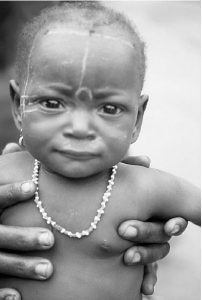
Throughout history, people have struggled to provide enough nourishment for their children, and to protect them from danger and disease. There has, however, been a remarkable increase in infant and child survival in recent years across societies. All countries in the world have seen a substantial decline in child mortality over the last few decades, going from nearly 20 million children dying annually in the 1960's to less than 6 million in 2015. As Steven Pinker says in Enlightenment Now (2018), describing this decline in infant and child mortality: "The loss of a child is among the most devastating experiences. Imagine the tragedy; then try to imagine it another million times. That's a quarter of the number of children who did not die last year alone who would have died had they been born fifteen years earlier. Now repeat, two hundred times or so, for the years since the decline in child mortality began. [This] represents a triumph of human well-being whose magnitude the mind cannot begin to comprehend." (Pinker, 57)
Child morality across regions. Source: Our World in Data
At the beginning of this article, I told the story of the Beng woman named Afwe Zi, who saw fourteen of her fifteen children each die in early childhood, all from the same unknown illness. Afwe described the symptoms to Alma Gottlieb, who later consulted with a medical doctor about the potential cause of the illness. The doctor thought asthma was the most likely explanation. If so, then, as Gottlieb writes, "asthma is a potentially fatal disease, but it can usually be brought under control with Western medicines. If Afwe's fourteen babies had had access to biomedical treatments, conceivably they could all be alive today."
Photographs © Alma Gottlieb. Reproduced with kind permission.
William Buckner is a student of Evolutionary Anthropology at UC Davis. He is interested in cultural evolution and understanding human conflict patterns across cultures. You can follow him on Twitter @Evolving_Moloch
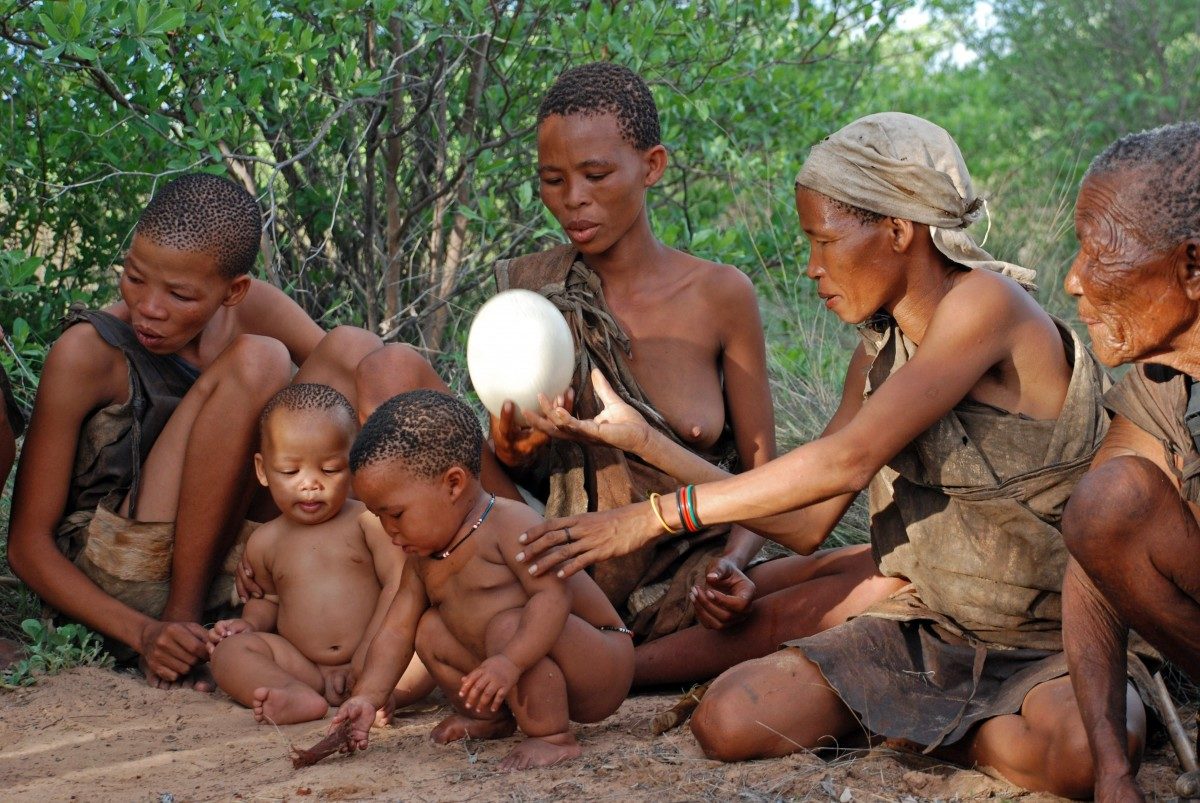
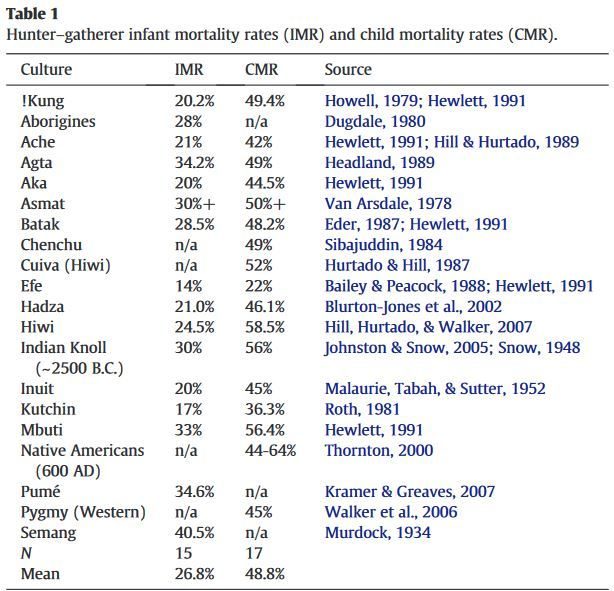
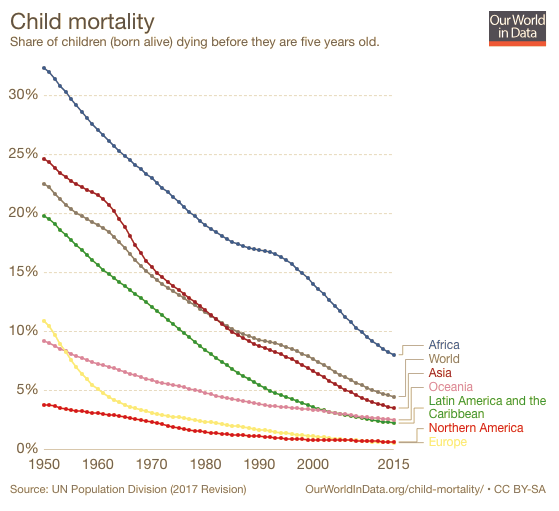



Reader Comments
to our Newsletter